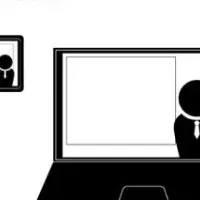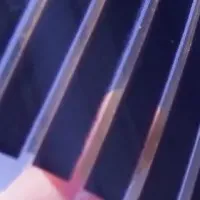
Huawei Digital Power Hosts Forum to Enhance Energy Storage Safety and Business Strategies
Huawei Digital Power Hosts Grid Forming & ESS Safety Forum
Huawei Digital Power successfully organized the Grid Forming & Energy Storage System (ESS) Safety Forum on June 12, 2025, in Shanghai. This event brought together clients, partners, insurance companies, and certification organizations from the photovoltaic (PV) and ESS sectors to discuss technological trends and the practical applications of grid-forming technologies. Key insights were exchanged regarding innovative business practices and the establishment of a robust safety ecosystem for energy storage solutions.
During the forum, Steven Zhou, President of the Smart PV & ESS Product Line at Huawei Digital Power, delivered the keynote address. He emphasized that as the global energy transition progresses, ESS technologies are becoming pivotal in supporting the large-scale integration of renewable energy into power grids, presenting both unprecedented opportunities and challenges. A grid-forming ESS, known for its excellent grid support capabilities, has emerged as a cutting-edge and popular technology. With sustainability at the forefront, ensuring the safety of ESS solutions is paramount for the industry's sustainable growth.
In line with this vision, Huawei Digital Power introduced the latest FusionSolar 9.0 Smart PV+ESS solution, which promotes the grid-forming technology across all scenarios, enabling comprehensive applications. The company proposes four key safety standards: non-flammable, non-explosive, non-spreading, and non-harmful, reinforcing the reliability of systems. Huawei aims to partner with customers, industry players, and certification organizations to foster the introduction of safety standards while driving innovative business models, ensuring that all participants in the industry benefit from technological advancements leading to a sustainable future.
Insights and Discussions on Grid-Forming Strategies
As part of the forum, experts Robert Liew, APAC Research Director at Wood Mackenzie, and Patrick Zank, Business Development Manager at VDE, discussed how grid-forming technologies can facilitate investments in renewable energies. They highlighted that uniform standards and market trust are vital for promoting widespread implementation. Additionally, Vannsith Ith, Director of the Power Management Division at Schneider Electric, and Billy Qiu, Technical Manager of Smart Energy at TÜV SÜD, presented the first ESS project in Cambodia. TÜV SÜD conducted empirical testing for the grid-forming capabilities of Huawei's PV+ESS system, marking a significant milestone in establishing a stable and reliable smart grid in Southeast Asia.
Chen Danqing, CTO of Huawei Digital Power's Grid-Forming ESS division, identified four significant technical challenges for the commercial application of grid-forming technology: stability during parallel operation of multiple devices, damping of broadband oscillations, robust overload support, and device safety and reliability. Drawing from extensive experience with PV and ESS technologies, particularly in grid-friendly and grid-forming capabilities, Huawei offers a Smart String Grid-Forming ESS technology system. This system encompasses grid-forming capabilities across the entire process of power generation, transmission, distribution, and utilization, redefining core standards for these capabilities.
Committing to Safety in ESS Technology
Addressing the safety concerns surrounding ESS implementations, Chen Weipeng, Regional Business President (Non-Life Insurance) at Munich Re, shared critical insights on hedging ESS projects. Chen Xiong, General Manager of Electric Power and Electronic Products Service at TÜV Rheinland China, stressed that true systems safety must consider the entire lifecycle of ESS technologies.
Steve Zheng, head of the Grid-Forming ESS Business at Huawei Digital Power, indicated that ESS often exhibit three typical characteristics: high density, high voltage, and high current. These features can pose significant safety risks due to electrochemical inconsistencies, grid uncertainties, and insufficient digital management capabilities throughout their lifecycle. To tackle these issues, Huawei unveiled an innovative safety system that integrates the ‘Panshi’ battery pack, a two-tier string architecture, and intelligent health diagnostics to safeguard ESS solutions throughout their lifecycle.
This battery pack is designed as the smallest safety unit, utilizing a three-tier insulation approach to prevent thermal propagation and fire hazards stemming from battery thermal runaways. This architecture effectively blocks reverse power flow while maintaining stable active power during high- and low-voltage transitions, allowing for rapid grid recovery. An advanced digital management platform enhances safety visibility and controls by providing fault alerts up to seven days in advance, detecting over 30 fault types, and facilitating real-time status monitoring.
In collaboration with the international organization DNV, Huawei conducted successful extreme ignition tests on the Smart String Grid-Forming ESS to verify its safety performance in high-stress scenarios. Furthermore, during the forum at Huawei’s Dongguan Comprehensive Lab, tests for nail penetration, water submersion, and thermal runaway were performed, which conclusively confirmed the system's safety regarding the four proposed safety standards.
As a result, Huawei Digital Power is dedicated to delivering PV+ESS solutions while collaborating with various industry stakeholders to achieve a sustainable and green future. With the introduction of the ESS Safety Initiative, Huawei and its partners aim to enhance fire protection specifications in ESS projects, bolster global adoption of ESS safety standards, and create visualized safety capacities that can be managed throughout the lifecycle, thereby securing a safe and stable energy future.
Topics Energy)










【About Using Articles】
You can freely use the title and article content by linking to the page where the article is posted.
※ Images cannot be used.
【About Links】
Links are free to use.